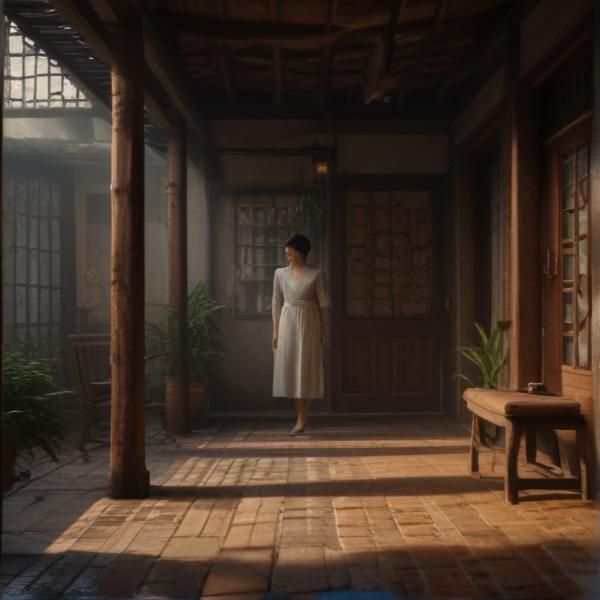基本信息 (Basic Information)
含义与用法 (Meanings & Usage)
中文核心释义 (Core Chinese Meaning): 用经纬线交错制作纺织品,即“编织”、“纺织”,也是“交错”、“构造”等引申义。
英文核心释义 (Core English Meaning): to weave, to knit, to braid; weaving or intertwining threads to make fabrics; also extended to mean 'construct' or 'intertwine'.
象形意义 / 为何这么写 (Pictographic Meaning / Writing Rationale)
文言文释义 (Classical Chinese Meaning)
与现代意义相近,主要指纺织、编织布帛等。Similar to modern meaning, mainly referring to weaving or producing fabrics.
深入学习 (In-depth Study)
字源故事 (Origin Story)
字形演变 (Character Evolution)
常用词语和例句 (Common Words & Examples)
织布 (to weave cloth)
她在家用织布机织布。
Eng: She weaves cloth at home using a loom.
纺织 (spinning and weaving; textiles)
这座城市以纺织工业闻名。
Eng: This city is famous for its textile industry.
织网 (to weave a net)
蜘蛛在房梁上织网。
Eng: The spider is weaving a web on the beam.
相关成语 (Related Idioms)
昼夜织席
Meaning: to weave mats day and night; to work diligently
多语言翻译 (核心释义) (Translations (Core Meaning))
- French: tisser, tissage
- German: weben, flechten
- Spanish: tejer, tejido
- Italian: tessere, intrecciare
- Portuguese: tecer, tecelagem
- Russian: ткать, плести
- Arabic: نسج
- Persian: بافتن
- Dutch: weven
- Polish: tkać, pleść
- Vietnamese: dệt, đan
- Ukrainian: ткати, плести
视频学习资源 (Video Learning Resources)
通过以下链接在热门视频网站搜索 "织" 的更多讲解:
Search for more explanations of "织" on popular video sites:
- 在 Bilibili.com 搜索 "织 字源 说文解字" (Search on Bilibili)
- 在 YouTube.com 搜索 "织 character origin etymology" (Search on YouTube)
网络参考 (Web References for "织") ()
网络内容摘要 (Web Content Summary):
“织”的核心含义是用丝、线等原料交错编制布匹等物品,即“编织”或“纺织”。 The core meaning of “织” (zhī) is “to weave” or “to knit,” commonly referring to the process of making textiles by intertwining threads.
“织”字始见于战国文字,左边为“糸”(表示与丝线有关),右边为“戠”,起表音作用。这个字属于形声字,既表意也表音。 The character first appeared in Warring States period scripts, combining “糸” (related to silk/thread) on the left and “戠” on the right, which provided the sound. It is a phono-semantic (形声) character.
- 常用搭配:如“纺织”(textile/weaving)、“编织”(to knit/weave)、“织布”(to weave cloth)。 Common words: Examples include “纺织” (fǎngzhī, textile), “编织” (biānzhī, to knit), and “织布” (zhī bù, to weave cloth).
- 易混淆:“织”与“职”(duty, job)发音相同但含义完全不同,注意区分。 Easily confused with: “织” (to weave) and “职” (zhí, job/duty) sound the same but have different meanings. Be careful to distinguish them.
- 文化小常识:中国古代以丝织业著称,织机图、织布女等形象常见于历史文献与艺术中。 Cultural note: China has a rich tradition in silk weaving, and images of weavers or looms are common in Chinese history and art.
汉字"织"的起源、演变过程-汉字字源辞典
汉字字源辞典收录7747条汉字词条,基本涵盖了常见汉字的字源解析,是汉字研究的必备工具。 ... ,这是乐浪郡刻写在木板上的法令中的"织"字。 ...
织字形演变字源_汉字「织」_织的甲骨文_织的金文_金文编_甲骨文编
此字始見於戰國文字,左「糸」右「戠」。篆文從糸、戠(ㄓˊ zhí)聲。從「糸」,表示絲織品;「戠」表示音讀。《說文》另收有從糸、式聲的或體。隸書、楷書都從篆文來。在六書中屬於形聲。 汉字:「织」 字形演变 字源演变
更多图片 (织 More Images) ()
